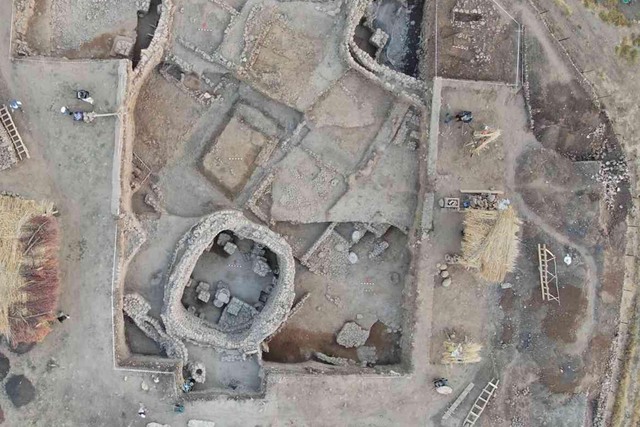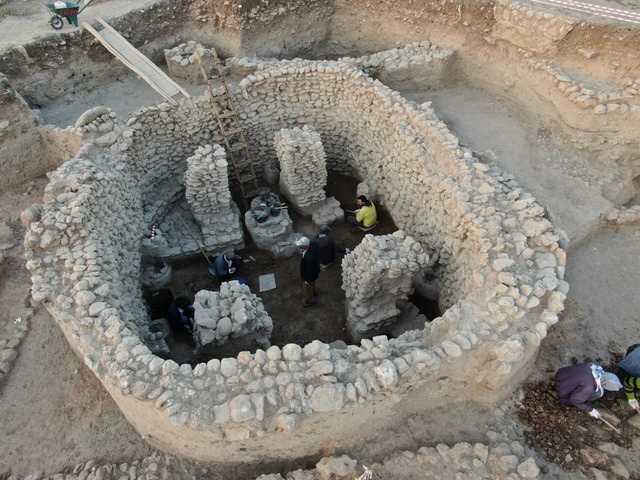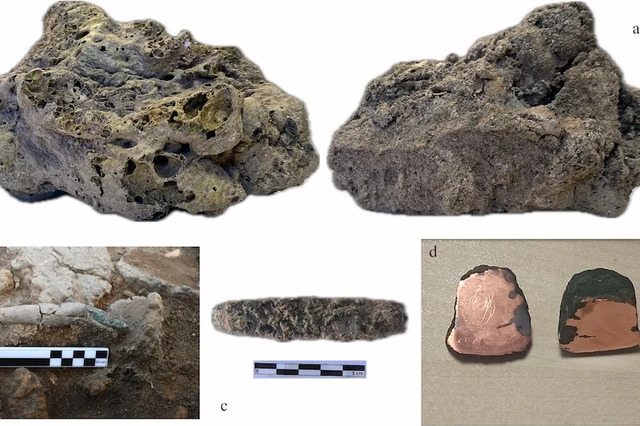For centuries, the history of metallurgy in prehistory has been shaped by a clear narrative: the mastery of metalworking emerged during the Chalcolithic period, around 4000 BCE. However, a groundbreaking discovery in Anatolia, Turkey, has shaken this conventional wisdom. The discovery of copper artifacts and evidence of experimental metallurgical activities at the Gre Fılla archaeological site, dated to 8,000 BCE, has forced archaeologists to reconsider the origins of metallurgy. These findings challenge long-held assumptions, suggesting that early metallurgical knowledge may have existed much earlier than previously believed, potentially altering our understanding of the development of human technology.
The Gre Fılla Excavation: Unveiling the Past
Located in the upper Tigris Valley, the Gre Fılla archaeological site has been under excavation since 2018. The site, which dates to the Pre-Pottery Neolithic B (PPNB) period, has provided an unprecedented glimpse into the lives of Anatolia’s last hunter-gatherers. While most of the area’s inhabitants were traditionally known for their reliance on stone tools and subsistence strategies, the findings at Gre Fılla suggest that the region’s inhabitants were experimenting with metallurgy long before the establishment of settled agricultural societies. The excavation revealed architectural structures, copper objects, and vitrified materials that appear to have been exposed to high temperatures, likely the result of early pyrometallurgical activities.


These findings suggest that, contrary to the traditional narrative, metallurgy may have had much earlier origins, driven by the same ingenuity that allowed humans to master fire, tools, and agriculture. At the heart of this discovery is a copper bar-shaped object, along with small droplets of copper embedded in vitrified material, indicating an early form of metalworking.
Metallurgy Before the Chalcolithic: Early Experiments in Copper Working
Traditionally, copper metallurgy has been linked to the Chalcolithic period (around 4000 BCE), a time when Neolithic societies were well-established. However, the Gre Fılla site challenges this timeline, suggesting that the practice of copper processing may have been more ancient than previously thought. The findings at Gre Fılla, which date back to approximately 8,000 BCE, may mark the earliest known examples of copper smelting, a process that involves extracting metal from ore using high heat.
While the notion of prehistoric metallurgy has often been confined to the later Chalcolithic period, the discovery of copper artifacts and vitrified materials at Gre Fılla forces us to reconsider the role of hunter-gatherer societies in the development of metallurgy. It appears that even during the Pre-Pottery Neolithic B period, people in Anatolia were not only familiar with copper but were actively experimenting with its processing.
Technological Advancements: Mastery of Fire and Metalworking
One of the most fascinating aspects of this discovery is the evidence suggesting that the inhabitants of Gre Fılla were capable of reaching temperatures exceeding 1,000 degrees Celsius, a crucial threshold for effective copper smelting. Prior to this discovery, the earliest evidence of smelting was believed to be from Yumuktepe, dating back to 5000 BCE. However, the Gre Fılla findings suggest that early Anatolian communities were experimenting with metallurgy centuries earlier, demonstrating an advanced understanding of fire control.

The process of copper smelting, which involves heating ore to extract pure copper, requires mastery of extremely high temperatures. The ability to generate and control such heat would have been a significant technological achievement, showcasing the ingenuity of early metallurgists. The presence of vitrified material at the site further supports this theory, as the material shows signs of having been exposed to high heat, suggesting that it was part of the smelting process. These findings reveal a much more sophisticated understanding of fire and metalworking than previously thought for this period.
Vitrified Materials and the Evidence of Early Smelting
One of the most intriguing discoveries at Gre Fılla is the vitrified material, known as GRE-VRF, which was found in close association with copper objects. This material exhibits a smooth, fluid texture on one side, while the other side shows a depression, likely from contact with a container or structure exposed to high temperatures. The chemical composition of the GRE-VRF suggests the presence of chromium and iron-rich minerals, typical of experimental metallurgical processes.
Vitrification occurs when materials, such as rock or clay, are exposed to extreme heat, causing them to melt and form a glass-like substance. The presence of vitrified material at Gre Fılla supports the hypothesis that the early inhabitants of the site were experimenting with smelting and refining copper. This finding provides crucial evidence that early metallurgists were capable of reaching the high temperatures necessary for smelting, a technology that would later play a pivotal role in the development of human societies.

A Copper Bar: Long-Distance Trade and Metallurgical Innovation
Another significant finding at Gre Fılla is a copper bar-shaped object, which raises important questions about the origins of the copper used in the site’s metallurgy. Lead isotope analysis revealed that the copper used in this object did not come from the nearby Ergani mines, but from much farther away in the Black Sea region, possibly from Trabzon or Artvin. This discovery suggests that long-distance trade networks were already in place during this period, allowing the inhabitants of Gre Fılla to access copper from distant sources.
The high purity of the copper in the bar-shaped object also indicates that it may have been refined, suggesting that the inhabitants of Gre Fılla were not simply experimenting with copper but were also refining and improving the quality of the metal. This is a crucial step in the evolution of metallurgy, as it marks a shift from the simple use of native copper to more advanced techniques of metalworking and refining.
Reassessing the Evolution of Metallurgy
The discovery at Gre Fılla requires a major reassessment of the origins of metallurgy. Rather than a sudden technological leap, it appears that the transition from the Neolithic to the Chalcolithic period may have been a more gradual process, with early metallurgical activities occurring over a longer period of time. The inhabitants of Gre Fılla were likely experimenting with metallurgy in ways that were previously unknown, and these findings challenge the conventional narrative of metallurgy emerging in a single, distinct phase during the Chalcolithic period.
Furthermore, these findings highlight the independent development of metallurgy across different regions. The discovery at Gre Fılla reinforces the idea that technological advancements did not occur at the same pace or in the same manner across all societies. Instead, different communities, based on their unique environments and resources, may have developed their own practices and innovations in metallurgy, leading to the gradual evolution of this technology.
Video
Watch the documentary What Happened to the Hunter-Gatherers of Southeast Europe? to explore the fascinating history of Stone Age Europe.
Conclusion: A New Narrative for the Origin of Metallurgy
The findings at Gre Fılla represent a groundbreaking discovery that reshapes our understanding of the origins of metallurgy. The evidence suggests that the inhabitants of Anatolia’s last hunter-gatherer societies were experimenting with copper processing long before the Chalcolithic period, challenging the traditional narrative of metallurgy’s emergence.
Rather than a sudden shift, it seems that metallurgy developed gradually over time, driven by experimental processes and the adaptation of early societies to their changing environments. The discovery of copper artifacts, vitrified materials, and evidence of advanced fire control at Gre Fılla highlights the ingenuity and innovation of early metallurgists, offering a new perspective on the evolution of human technology. This research encourages us to rethink the history of metallurgy, recognizing the complexity and diversity of technological advancements that shaped the ancient world.



